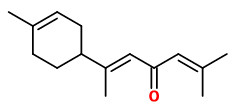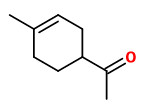Benutzer-Werkzeuge
Cedrus libani A. Rich. - syn.Pinus cedrus L. - Pinaceae - Cedar of Lebanon, Libanon-Zeder
Evergreen tree, up to 50m tall, native to Western Asia (Cyprus, Lebanon, Syria, Turkey), widely planted as an ornamental tree in parks and gardens.
„Cedar wood is very prized for its fine grain, attractive yellow color and fragrance.“
https://en.wikipedia.org/wiki/Cedrus_libani
„As a result of centuries of over-exploitation, the tree now covers only 5% of its estimated ancient range in Lebanon (Davis et al. 1994). It is closely related to the other three
Cedrus species: C.atlantica, from the Atlas Mountains of Morocco, C.deodara, endemic to the Western Himalayas and C.brevifolia, endemic to Cyprus.“
[Khuri, S., et al. „Conservation of the Cedrus libani populations in Lebanon: history, current status and experimental application of somatic embryogenesis.“ Biodiversity and Conservation 9.9 (2000): 1261-1273]
The scent of the slightly pressed needles can be described as piney, coniferous, slightly green and musky and is dominated by α-pinene, myrcene and caryophyllene. Green notes are added by (Z)-3-hexenal, (Z)-3-hexen-1-ol, and (Z)-3-hexen-1-yl acetate, and shades of a musky note is due to minor amounts of dodecano-12-lactone and tetradecano-14-lactone.
[Scent of a vanishing flora, Roman Kaiser, 2011, 164]
Cedrus libani wood essential oil hydrodistilled from fresh aerial parts showed 27 compounds by GC, accounting for 93.3 % of the total complex. Main components were α-himachalene (9.5%), β-himachalene (21.4%), and γ-himachalene (6.0%), together with α-(E)-atlantone (19.3%). Minor components were e.g. 4-acetyl-1-methylcyclohexene (0.1%), p-methylacetophenone (0.3%), and (E)-nerolidol (0.2%).
[Saab, Antoine M., et al. „Phytochemical analysis and cytotoxicity towards multidrug-resistant leukemia cells of essential oils derived from Lebanese medicinal plants.“ Planta medica 78.18 (2012): 1927-1931]
Cedrus libani, Burggarten Wien © Rolf Marschner (2006) www.botanische-spaziergaenge.at
Cedrus libani, Schlosspark Grafenegg © Rolf Marschner (2019) www.botanische-spaziergaenge.at


